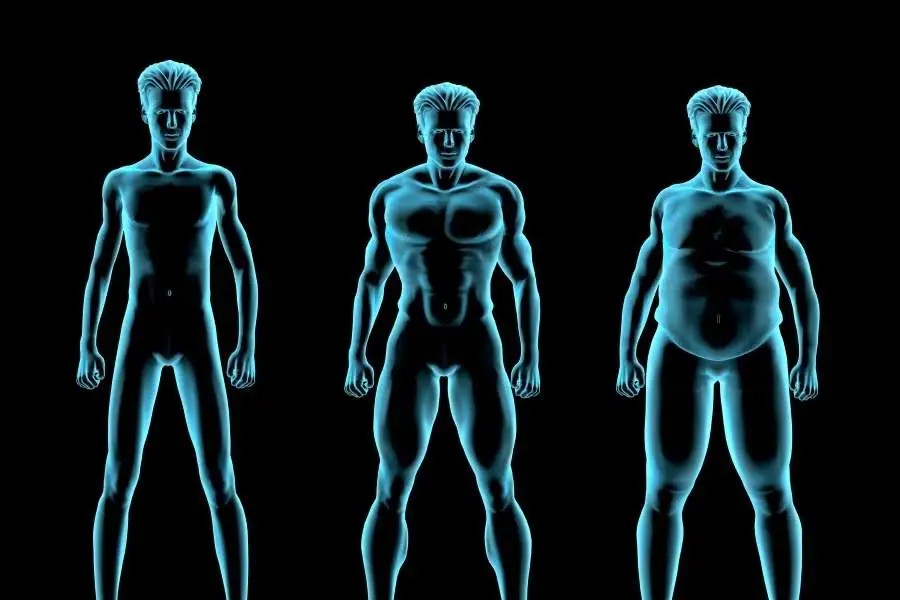There are different types of Male bodies that can be referred to as somatotypes. It means that there are three body compositions that men usually have. This idea of somatotype was given by Doctor W.H. Sheldon back in the early 1940s. The three somatotypes that he described were endomorph, mesomorph, and ectomorph. Previously it was believed that a person born with a specific body type or somatotype would be unable to change it.
It was also thought that the physiological and psychological characters of the person were linked to the body type he had. As Sheldon described the somatotypes in the 1940s, he told them they were rounded and soft, square and muscular and thin and fine-boned in the order of endomorph, mesomorph, and ectomorph, respectively. He declared that the names of the somatotypes were chosen because he had a belief that the traits of a person that were predominate were set in stone, from pre-birth of either the endodermal, mesodermal, or ectodermal embryonic layers.
Endomorph
The first male body type that is being discussed is the endomorph body. It is has a relatively predominant roundness in a sift way in different regions of the body. This is because these bodies have larger digestive viscera than other male body types, and it dominates the economy of the body relatively. Endomorphs have a higher amount or percentage of body fat with fewer mass muscles. They can be heavier and rounder in shape, but this is not obese.
It is usually believed that people with endomorphic somatotypes tend to have more relaxed, comfortable, and highly extroverted characteristics. Also, to make up for their physique, people with endomorphic bodies usually consume more calories than people with other body types.
Mesomorph
This male body type usually is seen with a relative predominance of body muscles, bones, and connective tissues, which are the most dominant factor of the body. This male body type can be described as hard, heavy, and rectangular. They tend to have a medium frame and are not considered overweight or underweight but are solid and solid. Mesomorphic people are considered more active, assertive, and dynamic, and many have aggressive personalities.
They are also assumed to have a straight upright posture. Hence, it is regarded as an ideal posture since they tend to look and stay fit, and these bodies can achieve the goal of gaining body mass or muscle mass very quickly. Some features that they have are thin bones and a flatter ribcage with longer limbs.
Ectomorph
Ectomorphs generally are predominant of linearity and fragility. They have a high skin surface area than body mass which causes more exposure to the sensory fields. Ectomorphic bodies are long, lean with relatively less body fat and very little muscle mass. People with these types of bodies usually have a hard time gaining weight.
It is widely believed that people who have endomorphic male body types are more introverted, are more thoughtful, inhibited, and have a comparatively more sensitive personality. People who are ectomorphs are identified by their slender waists, narrow hips, and long legs, and hands, along with small joints. They appear to be slim without any body fat or muscle mass at all.
Male body type spectrum
The somatotypes were considered accurate back then, but in this modern era, it is understood that there is a huge difference in the definitions proposed for the different somatotypes by Doctor Sheldon. No human body exists within only one somatotype, and all bodies constantly keep changing as it grows and come under spectrums between three of the body types.
It is understood that the somatotype of a person keeps changing; the character that a person display is considered the observable somatotype of the person. Every individual has different body images, and everybody is deemed ideal as long as they are fit and healthy. A body type is not a life sentence. If everybody were perfect, people like gym trainers, nutritionists, and fitness coaches wouldn’t have their jobs today.
We all know that the human body is highly adaptive and always wants to be in equilibrium with its surroundings. But it can take time to break its repeated old pattern. It is proven that physical training and diet, and habit changes affect the change in body composition.
It takes both time and consistency to change a body type, and these both are the factors that make a person think that they are stuck in a particular somatotype. Be cautious and attend to your body needs from time to time.




